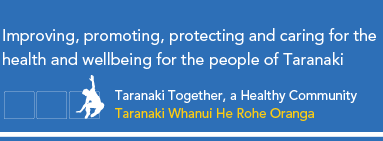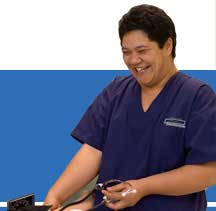Media Release
May 4, 2009
Automatic Chest Compression Device
The Taranaki District Health Board Ambulance Service are currently trialling two automatic chest compression devices, called a ZOLL ‘Autopulse’. The device mechanically performs the chest compressions when a person has a cardiac arrest from a medical cause.
“It is really quite an exciting device to trial”, said Ian May, TDHB Ambulance Manager. “We are very interested in seeing how they could help us undertake community cardiac arrests.”
They look like an enlarged flutter board that is placed under the patient’s upper body. A chest band is placed around the chest and the device compresses the chest with perfect rhythm, rate and depth.
“The chest band compresses more across the chest, rather than just compressing the sternum, and lab studies have shown that this type of compression is improving the circulation occurring during the compressions,” said Ian May.
Research suggests that manual chest compressions, when done properly, only provide 10-20% normal blood flow to the heart and 30-40% to the brain. Interruptions in chest compressions also decrease the rates of survival from cardiac arrest.
The ZOLL ‘AutoPulse’ has been shown to deliver consistent uninterrupted chest compressions resulting in a 33% improvement in coronary (heart) blood flow. Overseas studies are also showing promising results around the improvement in survival rates to hospital and improvement in survival to discharge from hospital.
The ZOLL ‘Autopulse’ can be used in circumstances shall as transporting the patient down stairs, in an ambulance or helicopter, which are normally instances that would result in difficulty providing effective chest compressions.
The use of the ZOLL ‘AutoPulse’ allow ambulance staff to concentrate on other aspects of resuscitating the patient, such as defibrillation, airway management and intubation and drug therapy. The device will automatically stop at the right time to allow ventilations.
TDHB also provide flight nurses and Advanced Life Support Paramedics to the Taranaki Community Rescue Helicopter. TDHB are working closely with the Helicopter Trust to also see whether the ZOLL ‘Autopulse’ may be a device that could help provide effective chest compressions to a patient in cardiac arrest when in flight.
The ZOLL ‘Autopulse’ has been used twice so far within the TDHB Service. One of those cases has resulted in the patient surviving. “There are many medical inventions that appear in the pre-hospital setting”, said Ian May, “but this one has really caught our attention as potentially one device that could add value to the work paramedics perform.”
“The success of a patient survival however is based on a number of factors’, said Mr May. The chain of survival has four links. Early recognition of the emergency and calling 111. Early bystander CPR, and early defibrillation. The last link being advanced life support intervention. “Bystander CPR statistically in Taranaki occurs only in approximately 40% of cardiac arrests the TDHB Ambulance Service attends which directly affects outcome”, said Mr May. “When all the components of the chain of survival work well there is clearly a greater chance of survival”.
For further information please contact directly:
Ian May
Regional Ambulance Service Manager
ian.may@tdhb.or.nz
027 20 12 984
Last updated: Monday, December 20, 2010



